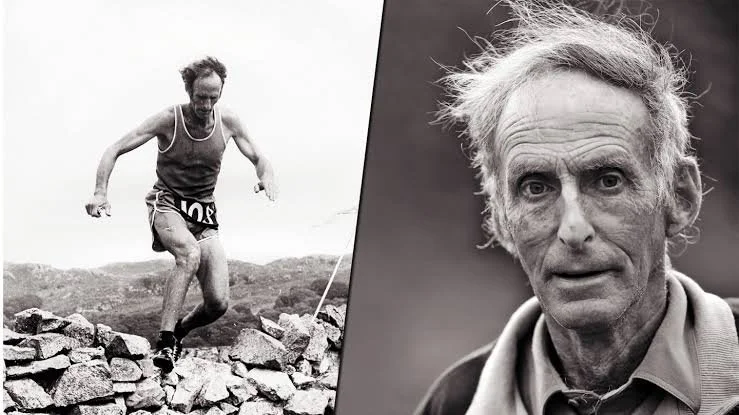You have to go back to the start to see the future.
Joss Naylor was a legend long before the internet, before brands and content. From shepherd to AN OG trail blazer.
If you haven’t heard of Joss Naylor, check out the beautiful film, created by Seth Whitfield and in partnership with The Guardian. Link below and in comments.
In 1971, Joss ran the fastest known time on Britain's National Three Peaks, a record that stands today. Paired with a rally driver, Frank Davies, the pair completed the challenge in 11 hours and 56 minutes, a record that still stands to this day (I’ve done it and struggled to make 24 hours!).
Aged 50, he ran all 214 Wainwrights (peaks in the Lake District) in seven days.
Aged 60, he ran 60 Lakeland fell tops in 36 hours.
At 70, he ran 70 fells.
All for freedom. To find where life lives.
His story isn't just legendary, it's foundational to what we're seeing now in running. All started by people like Joss.
In sport, there are trends and there are vectors. Running is most certainly the latter. It may feel like it’s exploded over the last couple of years, but this has been building for the last two decades.
The global subcultures and communities have played a huge part in that growth, from mass participation to the local parkrun, from trail running to crew culture. I meet a lot of people who’ve found running recently, and it’s easy to forget the work and foundations laid by the community leaders who helped build the sport into what it is today.
Whilst I’m not one to look back, sometimes it helps you to zoom back out. See the bigger picture. If that sounds good, have a read of the mystical book, the Zen of Running (Fred Rohe), visit the Lake District to run a fell, visit Chamonix when the UTMB® Group is on or sign up to the Hackney Half or Lyon City Trail. A full colourful spectrum of running experiences. Each uniquely different.
It feels like we’re coming full circle with the sport. Looking for freedom and disconnection over times and tags.
Running like Joss.
Remembering why we run.
Thinking less about the sport and more about the movement.
We’re not quite there but if you’re a running brand or looking to connect to runners, this isn’t just nostalgia, it’s direction. This shift towards freedom and escapism is your vector for a long term, real connection.



